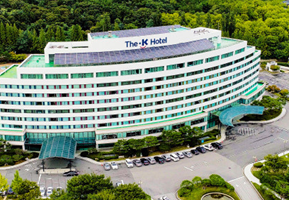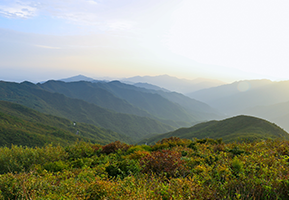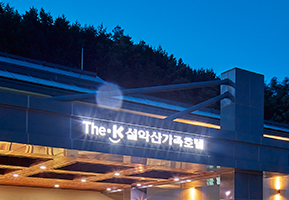- Home
- TOUR
TOUR
-
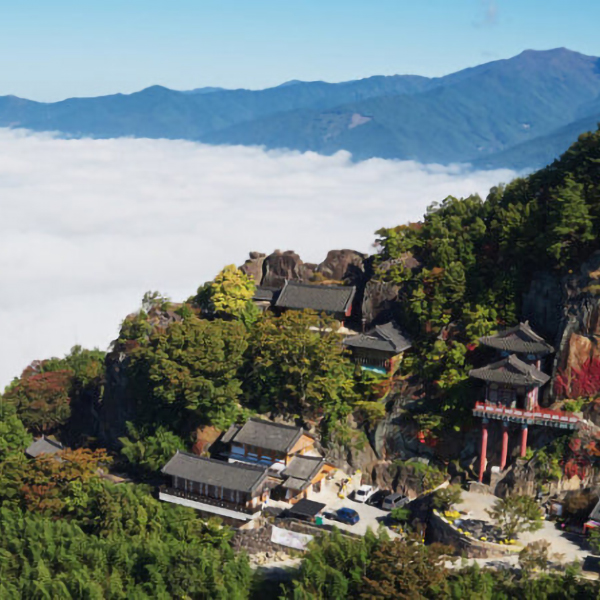
Saseongam Temple
Osan Mountain is a 531m-high mountain located in Jukmari, Muncheok-myeon. The mountain is not steep but offers many scenic views, so it is popular for family hiking and picnics courses. Saseongam Temple is said to have been built by Yeonkijosa in 544 (22 years of of King Sungjong, Baekje). On the rock wall is a sculpture of a standing Buddha, which is called a Maeyuraipsang. Initially, it was called Osanam and it was later called Saseongam (Rocks of four saints) in honor of the four Buddhist saints, Wonhyo, Dosun, Jingak, Uesan who practiced spiritual exercise here.
- Location303, Saseongam-gil, Muncheok-myeon, Gurye-gun, Jeollanam-do
- Operation09:00~18:00(Open Year-Round)
- Inquiries061-781-4544
- Saseongam Temple암 https://www.gurye.go.kr/tour/
-
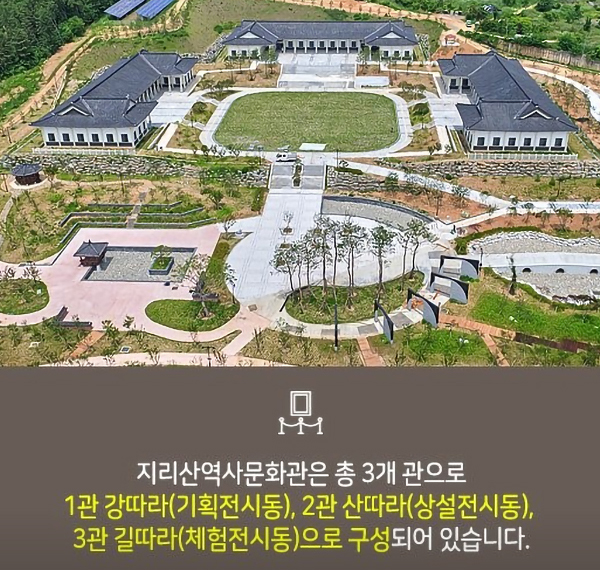
Jirisan Museum of History and Culture
The Jirisan History and Culture Center, located at the entrance of Hwaeomsa Temple in Gurye, Jeollanam-do, offers a comprehensive experience of Jirisan's history, culture, and ecology. Since its opening in 2019, it has become an important place for showcasing the value of Jirisan and Gurye’s traditional culture.
- Permanent Exhibition (Santara)
- Special Exhibitions (Gangtara)
- Interactive Exhibitions (Gilta)
It also includes a media presentation of Jirisan’s Ten Scenic Views, traditional temple models, local folklore, tea ceremony experiences, and a children’s room. Outside, visitors can enjoy a 20,000㎡ wildflower garden, rock climbing, and an ecological education area, perfect for families. Discover Jirisan’s history and nature through a unique, sensory experience at the Jirisan History and Culture Center.
- Location377-36, Hwaeomsa-ro, Masan-myeon, Gurye-gun, Jeollanam-do (18Km/20 minutes by car from the hotel)
- Operation09:30~17:30 (Closed every Mon)
- Inquiries061-780-8040
- Jirisan Museum of History and Culturehttp://jirisan.gurye.go.kr/subpage/3/9/view.do
-

Jiri Mountain Sky Run
- Thrill of the Sky, Jirisan Sky Run!
Starting at an elevation of 568m, this is the longest and steepest zip line course in Korea, offering a breathtaking view of Jirisan and the Seomjin River.
- Zipline + Monorail! A Unique Leisure Experience
Enjoy both the thrill of speed and the refreshing height. With a seated harness for added comfort, it's perfect for beginners to experience without any worries.
- A Must-See in Gurye, The Perfect Spot for Photos
Experience thrilling activities in a picturesque setting, making it the perfect place for photo ops! A great experience to create special memories with friends, partners, or family.
- Location79-9 Jiri Mountain Skyrun, Gwanghwa-myeon, Gurye-gun, Jeollanam-do (9Km/15 minutes by car from the hotel)
- Operation09:00~18:00 (12:00 ~ 13:00 break time)
- Inquiries0507-1395-2567
- Jiri Mountain Sky Runhttps://guryezipwire.co.kr/
- Thrill of the Sky, Jirisan Sky Run!
-
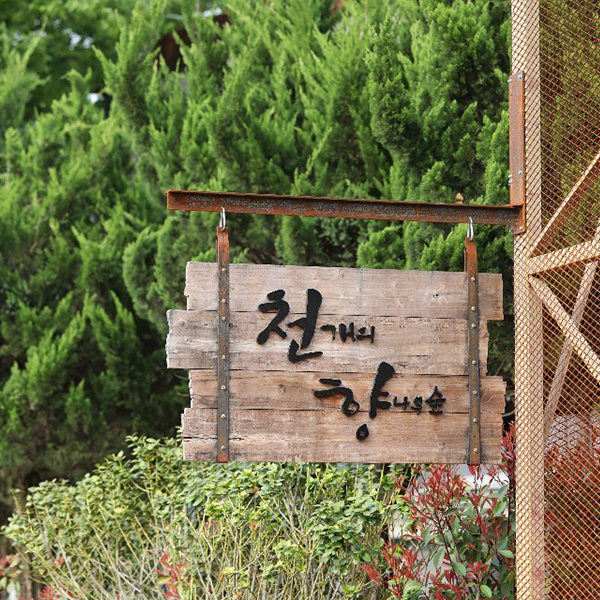
thousand juniper forests
A thousand juniper forests emphasizing the naturalness of the forest, away from artificial landscaping, are places that give a calm and comfortable feeling. The forest path, which stretches with more than a thousand juniper trees, including native juniper, Gaiska juniper, and Western juniper, makes you feel purified by forgetting the worries of the world and assimilating with nature. Not only the juniper forest path, but also the five-colored garden with the depth of time felt in three persimmon trees that are more than 100 years old, the sloth garden where you want to enjoy laziness, the herbal scent-filled scent garden, and the bruise garden, which sits on a large stone and erases private thoughts from your head, are slow and comfortable, and if you walk around comfortably, you will find peace of mind in the beauty of nature.
- Location12 Cheonbyeon-gil, Gwanghwa-myeon, Gurye-gun, Jeollanam-do (15Km/15 minutes by car from the hotel)
- Operation10:00~17:00 (Closed every Tuesday)
- Inquiries061-783-1004
- thousand juniper forestshttps://www.instagram.com/cheon_hyang_
-
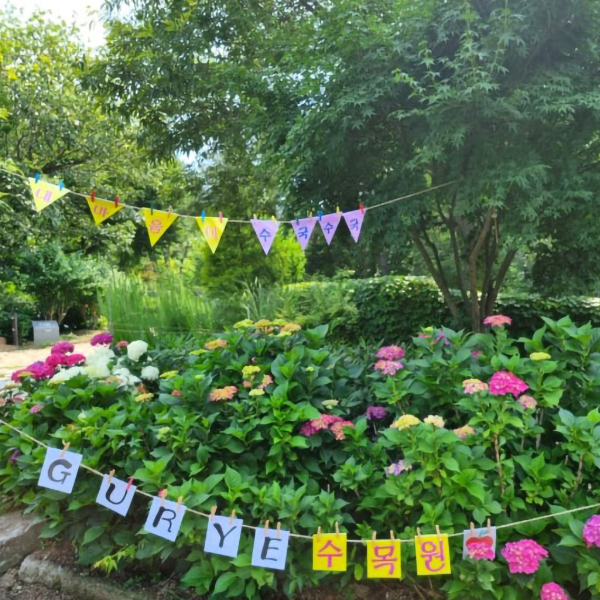
Gurye Arboretum
Gurye Arboretum, located in Sandong-myeon, Gurye-gun, was designated as Jeollanam-do Public Arboretum No. 1 on March 1, 2020. It is home to 13 theme gardens, including Spring Hyanggi Garden, Winter Garden, Shade Garden, Foreign Flower Garden, Climate Change Theme Garden, Native Botanical Garden, and Mooru Ecological Garden, and visitors' information center, exhibition green room, and seed learning center, which are planted with various native trees and flowers.
- Blooming between January and February - Japanese apricot, rich year, and white cedar trees overcome the cold winter to announce spring,
- Blooming in March and April - cedar, azalea, azalea, daffodil, heary, muskari are in full bloom with modest spring flowers,
- Flowers in May and June - magnolias, irises, peonies, hawks, and golden flowers are the main examples
- The hydrangeas that show off their colorful and beautiful appearance - started blooming in mid-June and have been embracing a deep scent with summer flowers until the end of July,
- In August and September - Mugunghwa, Seoksan tricolor flower, bee ant odor, baby bump fan, and Riatris embroider splendidly,
- Blooming in October and November - Maple trees, calligraphy trees, floor flower trees, and persimmons will decorate autumn beautifully.
- Location125 Tapdong 1-gil, Sandong-myeon, Gurye-gun, Jeollanam-do (3km/5 minutes by car from the hotel)
- Operation09:00~18:00(Closed every Monday)
- Inquiries061-783-0599
- Jirisan Gardenhttps://ecopark.gurye.go.kr/
-
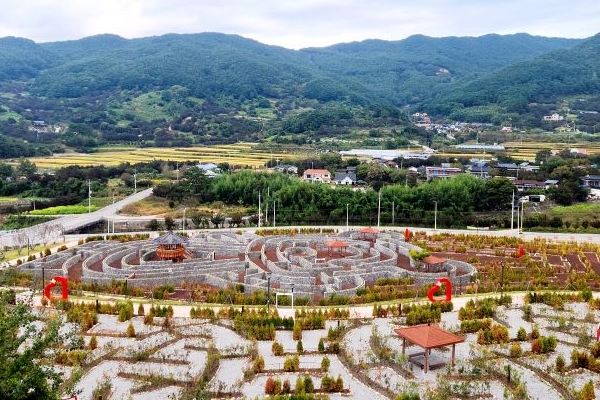
Sansuyu Maze Park
A special walking path where healing and experiences coexist in nature.Gurye County is famous for its Sansuyu flowers, which turn the area into a sea of yellow every spring. At the heart of this beauty lies Sansuyu Maze Park, a comprehensive healing space where you can enjoy both the natural beauty and fun experiences.
- Location47 Sansuyu-gil, Sandong-myeon, Gurye-gun, Jeollanam-do (within a 5-minute walk from the hotel)
- Operation09:00 ~ 18:00 (Free admission; however, some sections may be closed in case of rain)
- InquiriesGurye County Tourism Policy Division, 061-780-2222
-
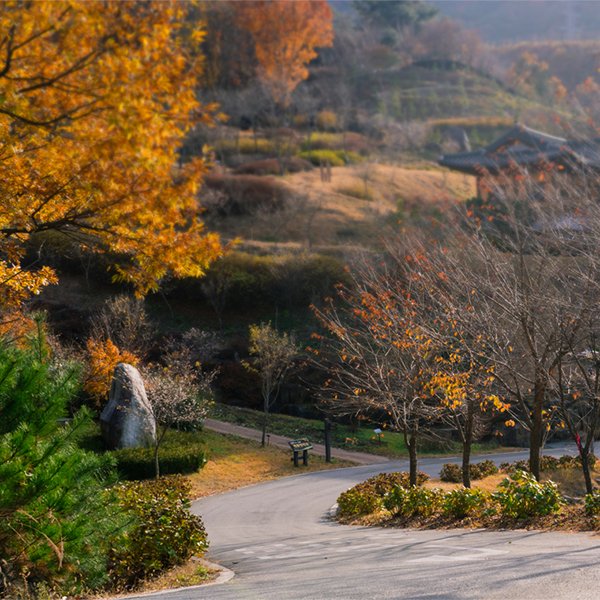
Jirisan Trail
Jirisan Trail is a 300 km–long walking trail connecting the three provinces (North Jeolla, South Jeolla, and South Gyeongsang), 5 cities and counties (Namwon, Gurye, Hadong, Sancheong, Hamyang), and about 80 villages in 16 townships around Jirisan Mountain. It was established in 2011 by restoring and connecting old paths in the area in a large circle.
- Course 1: Sandong Bamjae - Sandong Tapdong 10.1 km (mountain)
- Course 2: Sandong Tapdong - Gwangui Banggwang 11.8 km (mountain)
- Course 3: Gwangui Banggwang - Toji Omi 12.2 km (mountain)
- Course 4: Gwangui Nandong - Toji Omi 16.9 km (Seosicheon Stream and Seomjingang River)
- Jirisan Trail http://www.trail.or.kr
- Map Download(Gurye stretch)
- Image Source : Gurye-gun, https://www.gurye.go.kr
- OperationThroughout the year
- Inquiries+82-61-781-0850
-
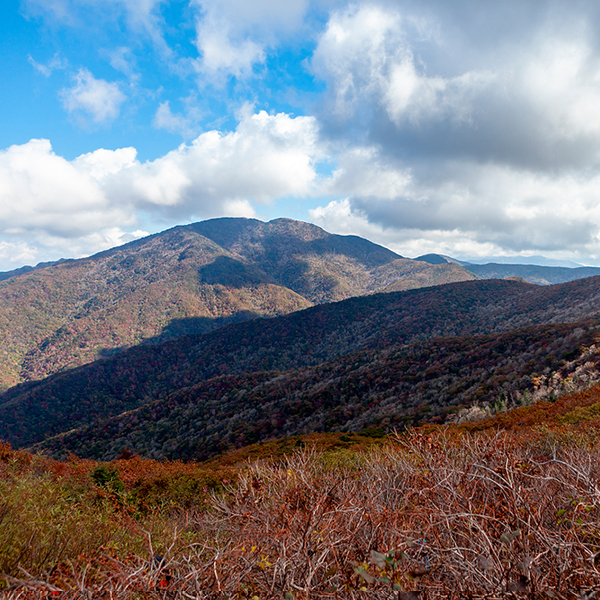
Nogodan Peak
Nogodan Peak, which is 1,507 m–high, is considered to be one of the three greatest peaks of Jirisan Mountain, along with Cheonwangbong Peak (1,915 m) and Banyabong Peak (1,734 m). It is a part of the Baekdudaegan Mountain Range. Since the Silla period, it has been considered as a sacred place, used as a training site for Silla’s Hwarang order and as a site of rituals. Around the 1,100 m to 1,200 mark lies a plateau covered by an expansive daylily field, which was used as a summer vacation spot for Westerners who lived in Korea between the opening of commerce and World War 2. Like many other peaks in Jirisan Mountain, Nogodan Peak is renowned for its powerful silhouette and foliage, and the breathtaking view from the peak.
- OperationReservations Required
- Inquiries+82-61-783-9106
- from the Hotel28 Km / 35 min
-
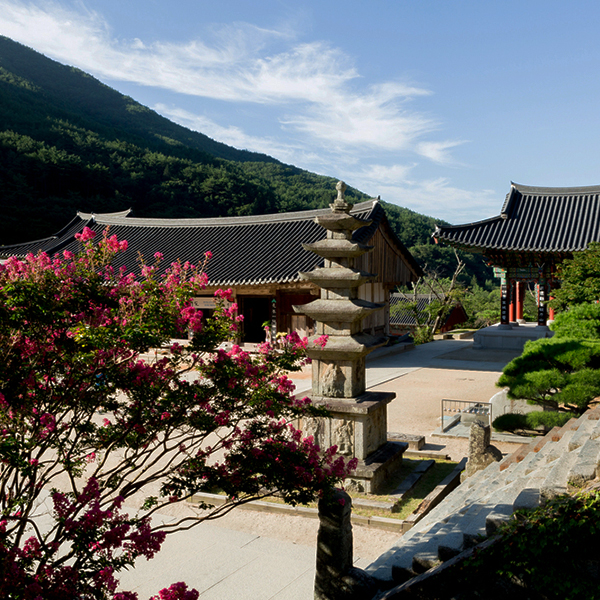
Hwaeomsa Temple
Located in Hwangjeon-ri, Masan-myeon, Gurye-gun, Hwaeomsa Temple was founded in 544 CE by the monk Yeongi. It was named after the Avatamsaka Sutra. The cultural and historical value of the temple complex is evident in the numerous artifacts maintained by the temple, including four National Treasures, seven Treasures, one Natural Monument, and two Local Monuments, along with the renowned Gakhwangjeon Hall. The temple is also notable for its interesting layout: starting from the Iljumun Gate, the next gate of Cheonwangmun Gate lies about 30° to the northeast, a contrast to the Geumgangmun Gate of the west.
- Hwaeomsa Temple http://www.hwaeomsa.org/
- OperationThroughout the year
- Inquiries+82-61-783-7600
- from the Hotel22 Km / 30 min
-

Surak Falls
A blast of cool water from Surak Falls is enough to clear even the most sweltering summer heat. The volume of the waterfall remains gentle enough that one does not have to worry about muscle pain or damage to eardrums. Indeed, locals say that a massage from the waterfall is beneficial to one’s health by mitigating neuropathic pain and postpartum afterpain.
- Image Source : Gurye-gun, https://www.gurye.go.kr
- OperationOpen throughout the year
- Inquiries+82-61-780-2881
- from the Hotel7 Km / 23 min
-
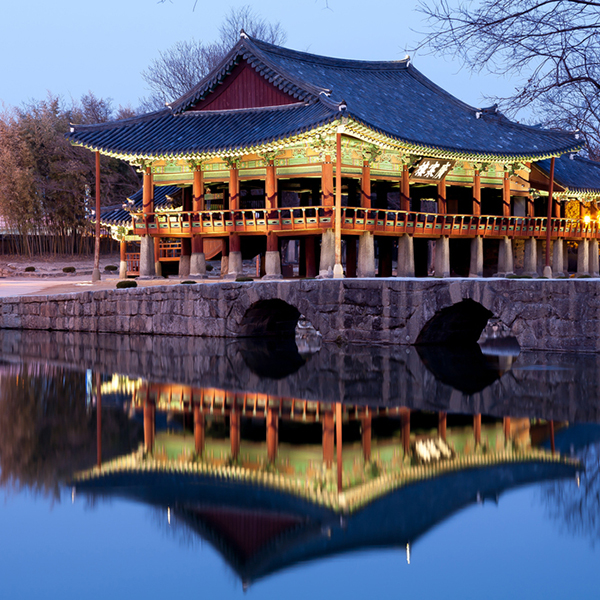
Gwanghallu Pavilion, Namwon
Gwanghallu Pavilion was designated as Treasure 281 of Korea on January 21, 1963. The pavilion has the characteristic Paljak (hipped-and-gabled) roof, and was made famous by the classical folk tale Chunhyangjeon. It was renamed from its original name of Gwangtongru Pavillion by the Joseon-era scholar Jeong In-ji.
- Gwanghallu http://www.gwanghallu.or.kr/
- Operation08:00 ~ 22:00
- Inquiries+82-63-625-4861
- from the Hotel20 Km / 25 min
-
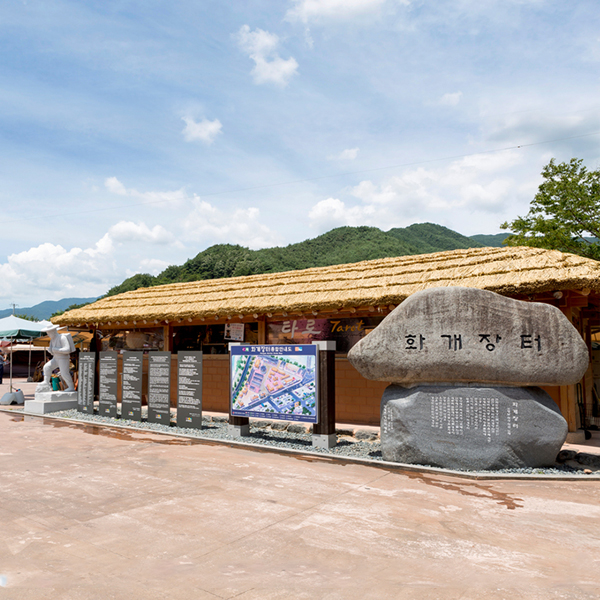
Hwagae Market
Hwagae Market has always been a bustling fifth-day market. The village of Hwagae lies on the confluence of Jirisan Mountain’s waters with Seomjingang River, and the Hwagae Market lies on the border between South Gyeongsang and South Jeolla Provinces. Before the Liberation of Korea, it was one of the five largest markets in the country. Today’s Hwagae Market is renowned for its cherry blossoms in spring, along a road that connects Hwagae Market with Ssanggyesa Temple. One can find traditional market fare like soup, acorn jelly, malt candy, and regional specialties like mountain herbs and green tea. Hwagae Market is also home to one of the few remaining old-style smithies in Korea, which offers handmade gardening tools like Korean sickle and Homi
- from the Hotel31 Km / 40 min
-
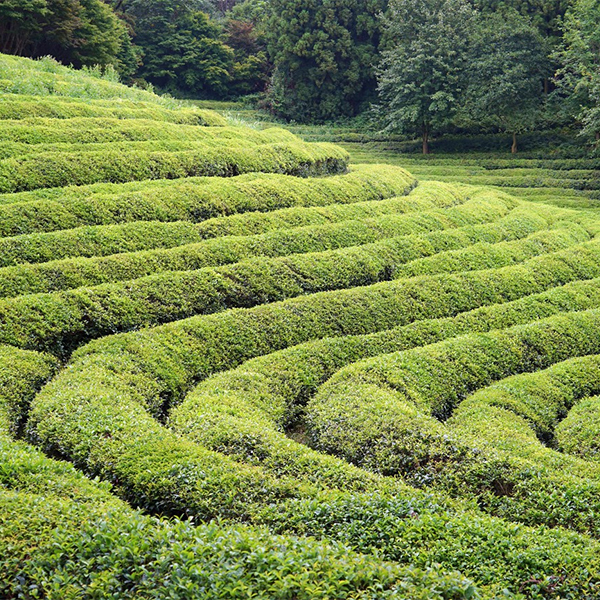
Green Tea Plantation in Boseong
Boseong County is Korea’s largest producer of tea and is also known as the center of Korean tea culture. Even today, Boseong County accounts for 40% of the total tea production in Korea.
- from the Hotel110 Km / 100 min
-
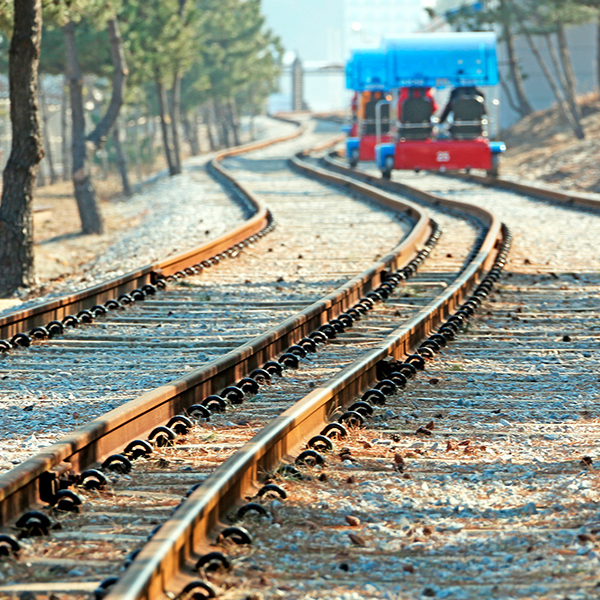
Seomjingang Train Village
Located in Oji-ri, Ogok-myeon, Gokseong-gun, South Jeolla Province, Seomjingang Train Village is home to a restored steam train, which runs along a 10 km stretch of tracks between the old Gokseong Station (Train Village) and Gajeong Station. A slow ride on the steam locomotive is the best way to enjoy the greenery and the flowers that bloom along the Seomjingang River.
- Operation10:00 ~ 16:00
- Inquiries+82-61-363-9900
- from the Hotel22 Km / 40 min


